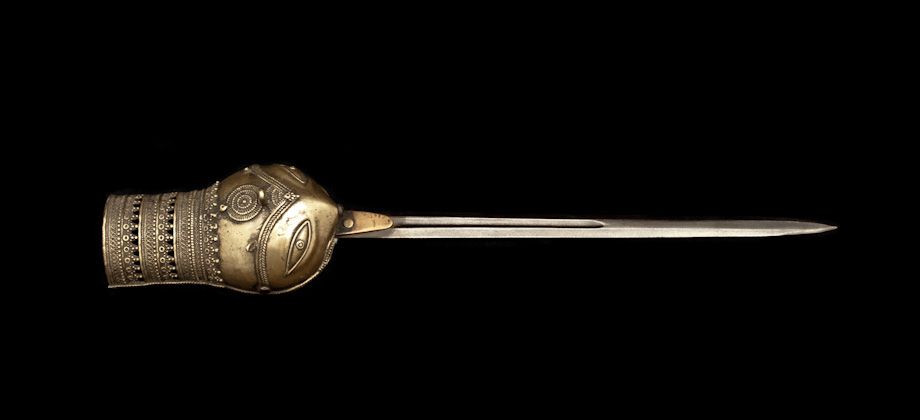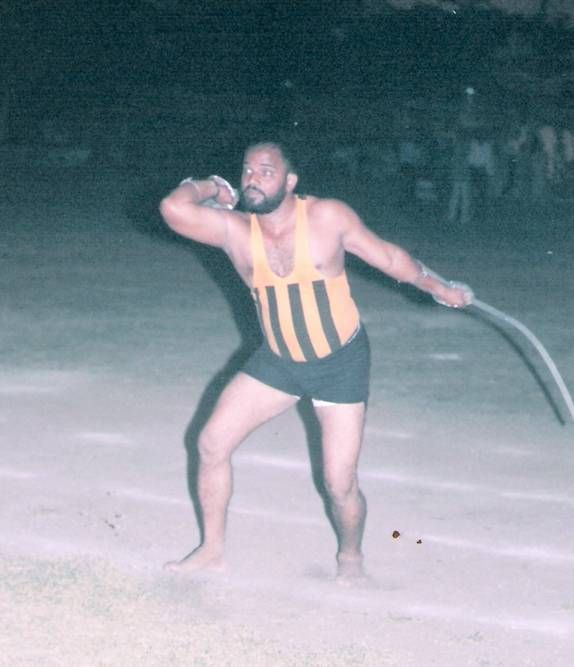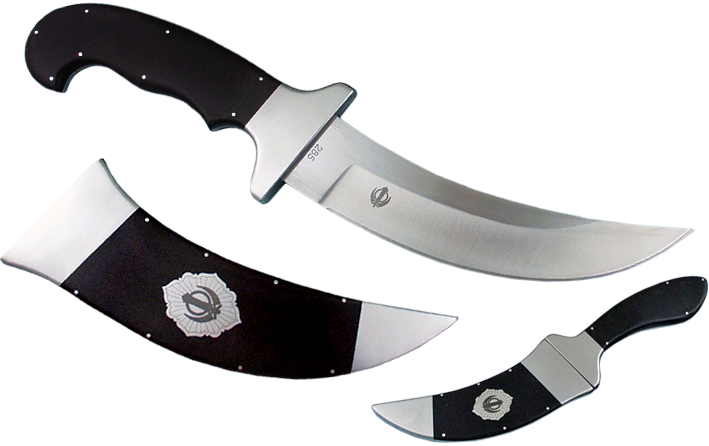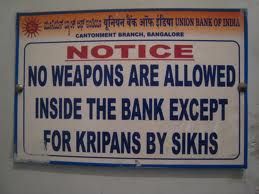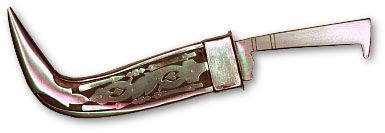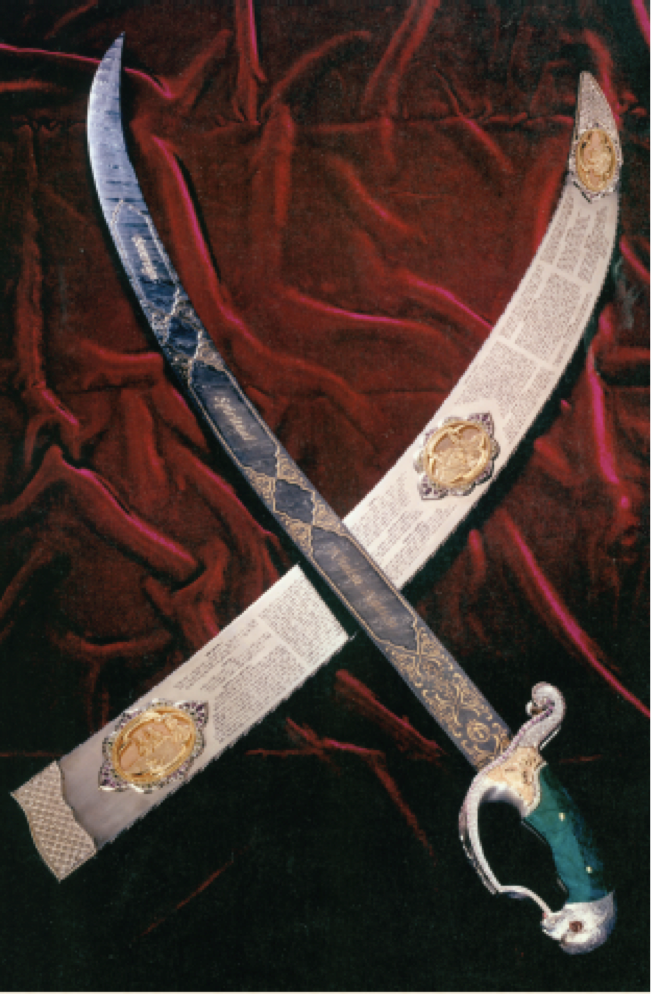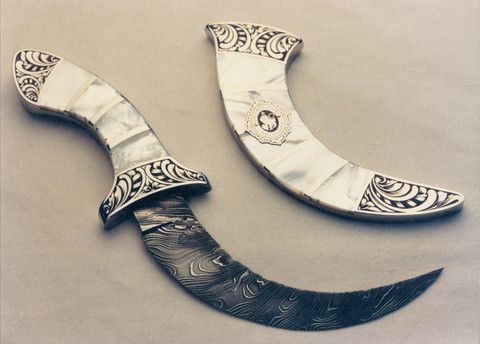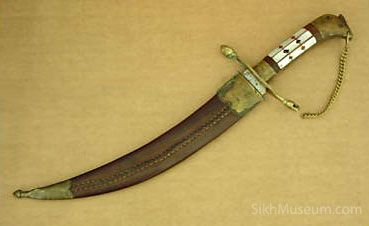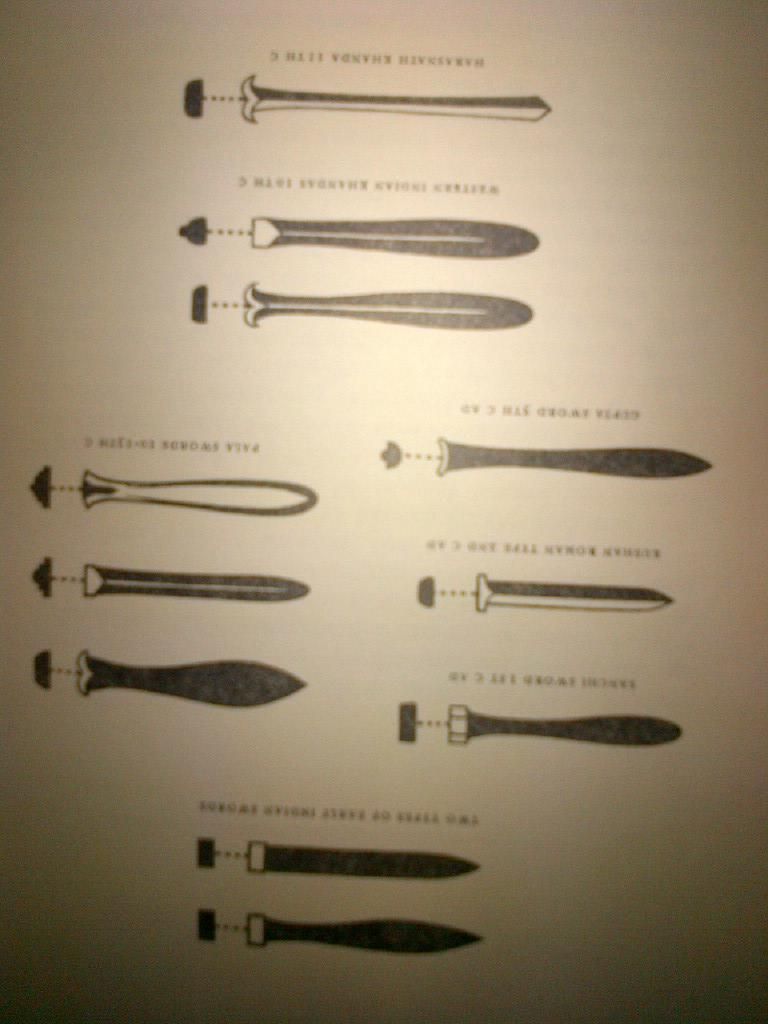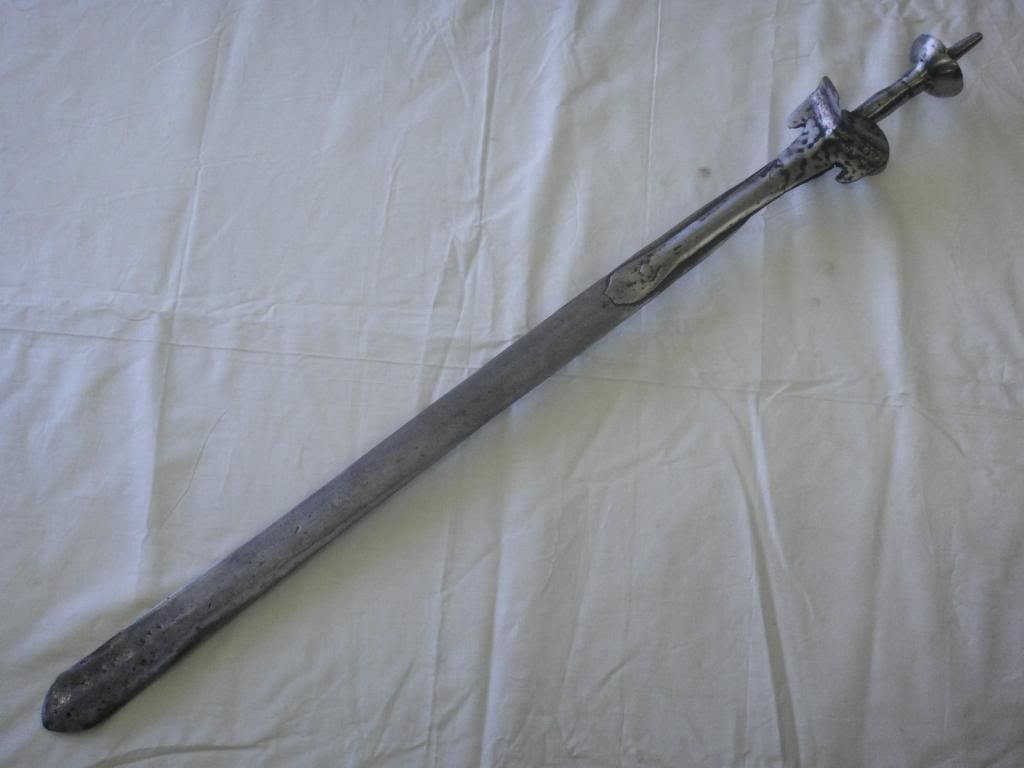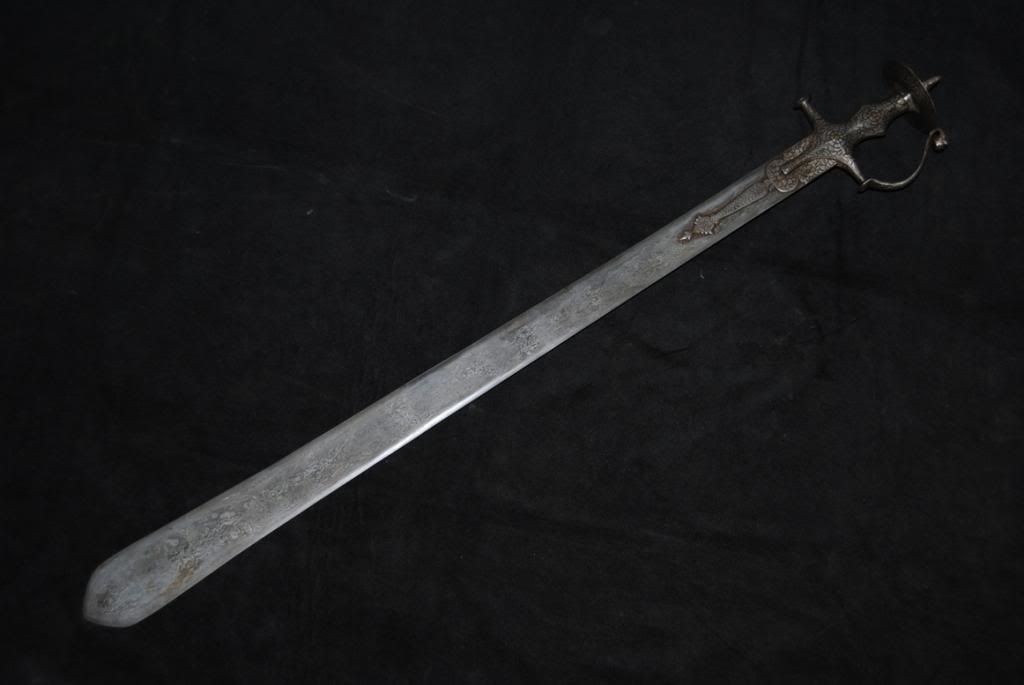airgun_novice wrote:The patta has a single blade fixed at the hilt. It' still is flexible and could be folded around the waist with the glove sticking out. It had a metal sleeve or glove into which the arm (for right handed swordsman it was the left since the right held the sword) could be slipped into. BTW, I always had the Qn on how the joint (between the glove and the blade) was created.
The urumi has at least two and sometimes more (and thinner) blades and is more flexible plus is usually coiled and tied. The hilt is "open" and thus can be nicely hidden within the cumberband.
The coiled state of both releases the potential energy added with the element of surprise. Now one of the versions of urumi has a rotating blade set (since we consider the hilt to be fixed in hand) at the hilt and requires even greater skill than "regular" urumi and is also rarely taught at kalaris; usually to one or two exceptionally skilled students who have potential to be Masters (gurukkul) themselves.
The slightly "stiffer" nature plus the radius (arm + say 5-6') of the patta would have posed a problem while using it on horseback or in tight infantry unit. So probably it was also less used even in those times - hence so few "experts". I would say its usage would have been restricted to rarified (entrenched) formation v/s more tightly formed (and numerous) enemy unit - thus one would have to be one's own backup in a situation where say 5-6 people would surround. The patta could then be used to "allow" in the fight zone circle, one or two attackers at a time for swordfight.
Patta was thus a supplement weapon to the sword - either khanda or talwar and if you chose to wield it, you lost out on usage of the shield. Urumi was a stand alone weapon and had the shield as a defensive weapon/ guard to support it. Plus a (sword+shield) combo is good for infantry, cavalry on flat or in mountainous terrain while (urumi+shield) is good for flat open ground where attackers are far less in numbers and can spread out. Due to its over-flexible nature the urumi would have to be used in stooped (bent at knees) posture while the patta could also be used standing/ jumping or with exceptional skill on horseback. The danD-patta like the tiger claws would best be (usually) used in duels, practice or demonstrations.
My thinking - so I could be wrong up here.
During Shivaji-Afzal meet only 4-6 people were inside the huge shamiana. Shivaji, Afzal, Sayyed, Jiva Mahala and the two 'vakils'. Afzal's army was outside at some distance while Shivaji's 'Mawalas' were nicely hidden in forest. Only 8-10 bodyguards of each were waiting outside the shamiana in the immediate vicinity. So while Shivaji was Sayyed's target, as was pre-planned (remember Sayyed's reputation with the patta was wide spread), Sayyed was Jiva's target from the start. Afzal Khan was always marked out by Shivaji. Shivaji was one of the few leaders who actually led from the front in the battles he participated in, rather than direct from afar. Hence the nomination of Netaji Palkar as his succcessor, if Afzal Khan had managed to kill him. May be in preparation, Sayyed was standing right next to Afzal Khan initially and Shivaji actually had to ask the Khan to re-position him. Jiva also "moved away" in deference to the wishes and thus positioned himself if Sayyed tried his skills. Interestingly enough historians have noted this movement of personal bodyguards and the exchange.
Couple of points to be noted -
1. Afzal Khan had tried similar modus operandi with another king (forgot his name). Plus his rape & slaughter of innocent civilians and intolerance towards all the temples he came across (including birth-place of Bhakti Movement (Pandharpur), Shivaji's Kul-daiwat (Tulza Bhawani), the Mahaganaapti temple of Wai, selection of Sayyed as his bodyguard and his initial position etc. all point out to Khan's intentions. Incidentally, Afzal Khan had no problem with the temple at Wai during his Subhedari there. He did publicly vow to kill Shivaji at the Adilshahi court before he set out. Hence the claim of treachery by Shivaji as was perpetrated by one Adilshahi historian is without merit.
2. Shivaji did not technically kill the Khan. Khan's head was cut off by another of Shivaji's bodyguards stationed outside - Sambhaji Kavji - as the wounded Khan tried to escape. Sayyed's patta did take a knick at Shivaji's head - but again Shivaji was protected by the iron skull cap inside his "feta"(OK ok - not sure of the name here, but a typical turban associated with Shivaji). Jiva already in motion dispatched off both Sayyed and then the Khan's vakil. Shows us the importance of HELMET.

Moin you are right - there are a couple of dand-pattas with wagh-nakhs (tiger claws) which are at display at PoW (now Jijamata) museum but they are kept straightened out for ease of display. Do not really reveal their flexible nature. May be the patta also folded inside the gauntlet, but then it would have to be very flexible.
But as we understand, Shivaji had worn his armor inside his shirt and had wagh-nakhs and the bichwa concealed inside the cumberband since Afzal Khan's directive was that he should come in un-armed. Wearing a gauntlet in the open would have given the precautions away at the start. Only after Khan's failed attempt to stab Shivaji in the back with his khanjar (due to the armor), Shivaji used the tiger claws to inflict wounds and got himself released from the Khan's one arm choke around the neck (almost blacking him out) and then used the bichwa to stab open Afzal Khan's tummy. Afzal Khan was one of the strongest persons known then and had reputation of bending crow-bars or lifting small canons at darbar demonstrations.
Again - my apologies for going OT with the story of the Maharaj, but felt it was relevant here and actually 'revolved' around the danD-patta.

